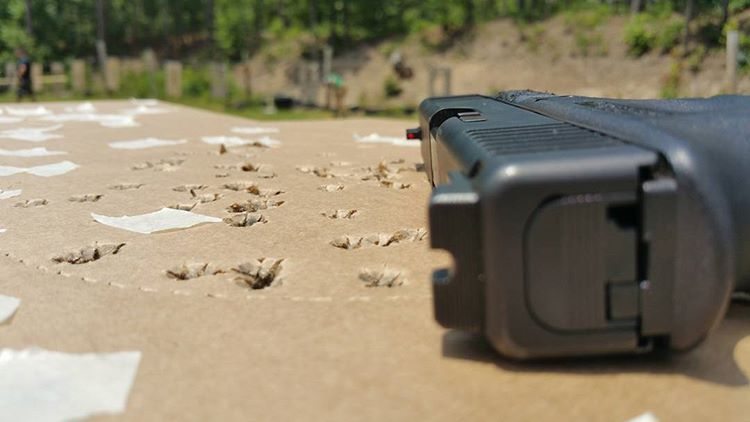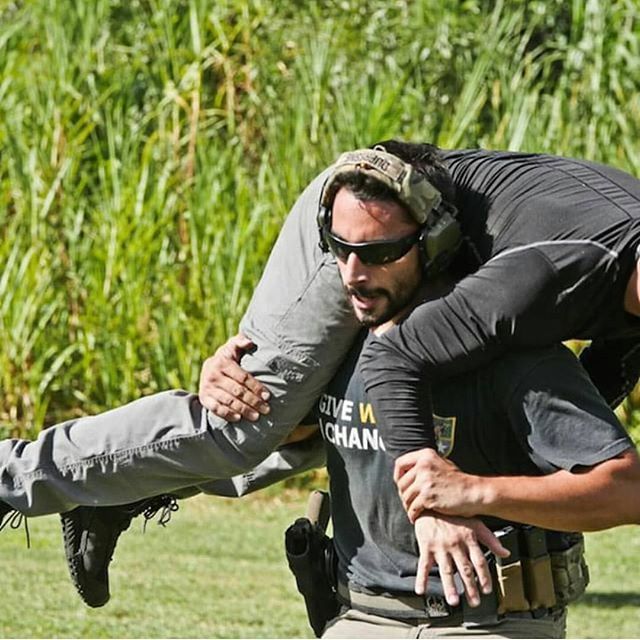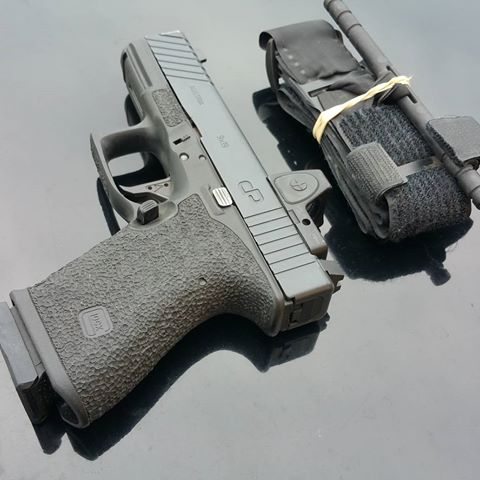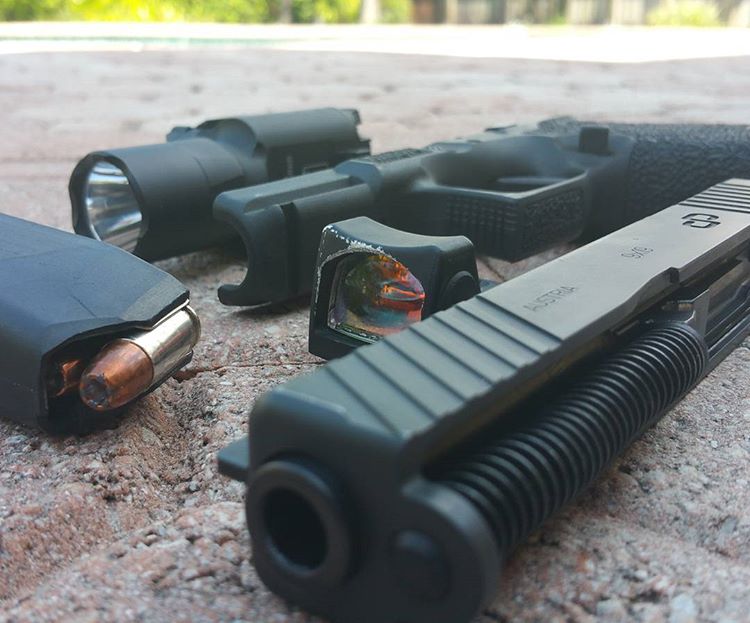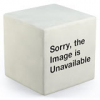Spotter Up will assume “no” responsibility for any use or misuse of information from this article.
This article alone will not make the reader a handgun expert or can it be used as a substitute for firearm proficiency. Spotter Up advises you to visit our site for training courses with a certified instructor on ALL weapon platforms.
Handgun Drills, Shooting Platforms and Training
Rules when handling a firearm anytime:
- Treat all weapons as if they are loaded no matter what condition it’s in.
- Keep muzzle pointed down range.
- Keep your finger off the trigger until you’re ready to shoot.
- Never point your weapon at anything you do not consider a threat.
- Know your target and what’s beyond. (Just in case you miss! L)
A simple exercise to begin with is dry firing. But first you must ensure the weapon is unloaded.
- Draw your weapon if holstered, or pick your weapon up with the muzzle pointed down range.
- Press the magazine release button and remove the magazine (semi auto), if you have a revolver press the cylinder release button and open the cylinder and remove all rounds.
- Rack the slide and lock it back to do a visual and physical check.
- Release the slide (semi auto), or revolvers close your cylinder.
- Make sure all ammo is removed from the immediate area for safety and a non-negligent discharge session.
Find a spot or acquire a target, find your sight alignment and simply press the trigger. Keep the trigger pressed for 1 second to see if your sights moved from the original spot on target. If you have a Glock, or single action weapon, you must rack the slide after each trigger press. If you have a SIG, or double action weapon, you can just keep pressing the trigger.
Repeat this step several times and remember to press and hold the trigger about a second. The reason for holding the trigger is when you go to live fire you can feel the reset and be able to fire again without removing your finger completely from the trigger for a more accurate follow-up shot.
After you have performed this drill several times, holster your weapon and begin to purchase, or draw, your weapon to achieve muscle memory. You can’t use your weapon if you can’t remove it from your holster. This is a simple and easy drill until you try to perform this under stress. The more you train, the more you gain reaction time to the bad guy’s action.
After you have practiced this several times, and able to draw your weapon without looking at it, you can now put it all together: draw, acquire target and fire. Remember this is your foundation for handgun manipulation. This can be done many, many, many, many wonderful times.. (Police Academy :D)
COVER/CONCEALMENT
Cover is anything hard or bullet resistant, or some type of barrier, that you can put between you and the bad guy. Example: car, concrete wall, steel barrier, metal doors or a reinforced wall, etc… Some of these are not readily available, which gives you a second option of concealment. For example: a door, wall, chair, table, cabinet, salad bar, etc… This tactic makes you a smaller target and opens the option of shot placement and shooting platforms like standing, kneeling or prone. So look around and find what you would consider cover/concealment and train yourself to draw on the move running to cover, or drawing your weapon behind cover. You should find which is best for you and you will learn that shooting from the weak side of the barrier is a slight bit harder than shooting from the strong side. While running to your chosen barrier you must take this into consideration because you may only get one shot!
Reload Drills
Now what do you do when you run out of bullets? Exactly, RELOAD as fast as possible. And this is just as, or even more important as, loading the weapon for the first time, because this is more than likely done under stress and in a life threatening situation. First you will need more than one magazine and a means of carrying the additional magazines. Before performing this exercise make sure the weapon is safe and unloaded, and ensures the magazines are unloaded as well.
Stand over your bed or table if at home, over your working table if at the range to catch the magazines as it slides out of the magazine well. SIDE NOTE: If you have a revolver there is no magazine to remove of course.
- Insert an empty magazine into the weapon and let the slide go forward, de-cock if necessary.
- Place your additional empty magazines in the magazine holster.
- Draw you weapon, acquire your target and press the trigger.
- Press the magazine release button at the same time you are reaching for and removing your reloadable magazine from the magazine holster.
- As the magazine slides out of the well you should be inserting a fresh magazine in the well and reacquiring your target.
SIDENOTE: If you have a single action weapon you must release the magazine, rack the slide, reinsert the magazine and reholster to run the exercise again. If you have a double action weapon you can reholster the weapon to continue the exercise.
- Now repeat steps 3-5…
SUMMARY
If you can perform these simple exercises you will be better prepared for the live fire exercises. Remember you are only as perfect as your practice. Train for survival not for defeat. Always think: WHATS MY NEXT MOVE?
FIND A WAY OR MAKE A WAY

